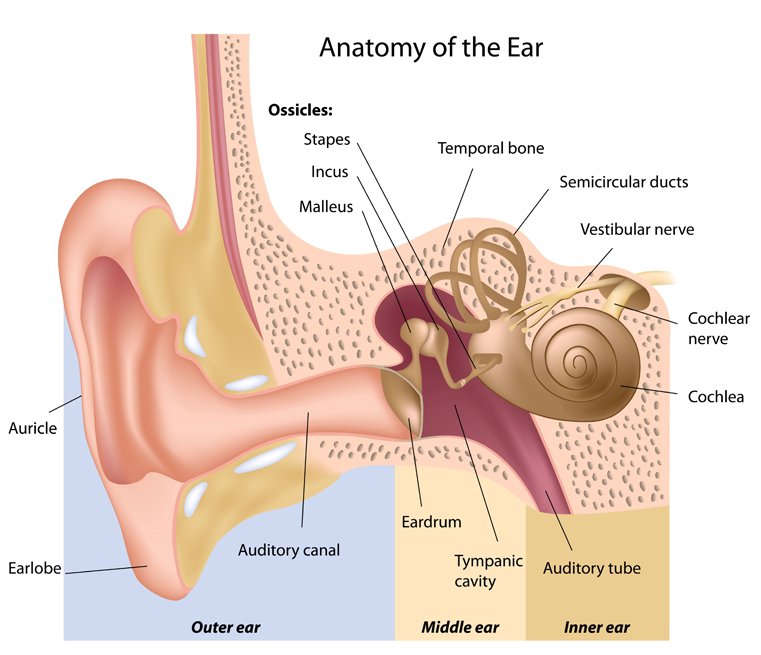
How Our Ear Works
Sometimes in order to understand why something is not working correctly, it helps to learn about the process and how the Ear works when it is functioning correctly. When learning about the process of hearing, it can be helpful to discuss the anatomy of the ear as well as how sound travels through the ear to fully understand how external sound becomes processed by the brain.
Sound Enters the Outer Ear
External sounds first enter the ear after passing the pinna, which is the exterior, flexible part of the ear that is made of cartilage. From the pinna, sound travels down the ear canal, which is a narrow passageway that leads to the middle ear. This is where you can sometimes acquire excess earwax buildup which contributes to clogged ears. Besides being the part of the ear you see when you look at someone, the pinna plays an important role in determining which direction a sound is coming from.
Movement is Created in the Middle Ear
Once the sound has moved through the ear canal, it enters the middle ear and into the eardrum. The eardrum sends vibrations to the ossicles, which are tiny bones in the middle ear called the malleus, incus, and stapes. Pitch and volume both determine the amount of vibration of the eardrum produces to send to the ossicles. As these tiny bones move, they send a signal to the inner ear for analysis.
The Inner Ear Signals the Brain
After the movement in the middle ear signals the inner ear, the process of hearing becomes delicate as electrical impulses are created. This is a multi-step and fascinating process that affects both the ability to properly process sounds and to maintain proper balance.
- Cochlea. This inner ear bone contains fluid and tiny hairs. When the ossicles move, the fluid inside the cochlea moves in a certain pattern to stimulate different hair according to pitch.
- Auditory nerve. The hair cell movement creates electrical signals that move down the auditory nerve to the brain. The electrical signal differs according to the pattern of hair cell movement.
- Brain. Once the electrical signal reaches the brain, it interprets the signal as a sound and determines association. Sound processing occurs in the temporal lobe of the brain.
Learn More at Metro Hearing
If you have concerns about your hearing and want to learn more about the hearing process or have questions such as, “How does sound travel through the ear?” contact Metro Hearing today to schedule an appointment for hearing analysis or to have any of your questions answered by their auditory professionals.

